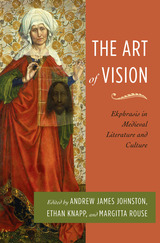2 books about Rouse, Margitta

Anthropology
A Continental Perspective
Christoph Wulf
University of Chicago Press, 2013
Originally published in German, Christoph Wulf’s Anthropology sets its sights on a topic as ambitious as its title suggests: anthropology itself. Arguing for an interdisciplinary and intercultural approach to anthropology that incorporates science, philosophy, history, and many other disciplines, Wulf examines—with breathtaking scope—all the ways that anthropology has been understood and practiced around the globe and through the years.
Seeking a central way to understand anthropology in the midst of many different approaches to the discipline, Wulf concentrates on the human body. An emblem of society, culture, and time, the body is also the result of many mimetic processes—the active acquisition of cultural knowledge. By examining the role of the body in the performance of rituals, gestures, language, and other forms of imagination, he offers a bold new look at how culture is produced, handed down, and transformed. Drawing such examinations into a comprehensive and sophisticated assessment of the discipline as a whole, Anthropology looks squarely at the mystery of humankind and the ways we have attempted to understand it.
[more]

The Art of Vision
Ekphrasis in Medieval Literature and Culture
Andrew James Johnston, Margitta Rouse, and Ethan Knapp
The Ohio State University Press, 2015
One of the most common ways of setting the arts in parallel, at least from the literary side, is through the popular rhetorical device of ekphrasis. The original meaning of this term is simply an extended and detailed, lively description, but it has been used most commonly in reference to painting or sculpture. In this lively collection of essays, Andrew James Johnston, Ethan Knapp, and Margitta Rouse offer a major contribution to the study of text–image relationships in medieval Europe. Resisting any rigid definition of ekphrasis, The Art of Vision is committed to reclaiming medieval ekphrasis, which has not only been criticized for its supposed aesthetic narcissism but has also frequently been depicted as belonging to an epoch when the distinctions between word and image were far less rigidly drawn. Examples studied range from the eleventh through the seventeenth centuries and include texts written in Medieval Latin, Medieval French, Middle English, Middle Scots, Middle High German, and Early Modern English.
The essays in this volume highlight precisely the entanglements that ekphrasis suggests and/or rejects: not merely of word and image, but also of sign and thing, stasis and mobility, medieval and (early) modern, absence and presence, the rhetorical and the visual, thinking and feeling, knowledge and desire, and many more. The Art of Vision furthers our understanding of the complexities of medieval ekphrasis while also complicating later understandings of this device. As such, it offers a more diverse account of medieval ekphrasis than previous studies of medieval text–image relationships, which have normally focused on a single country, language, or even manuscript.
The essays in this volume highlight precisely the entanglements that ekphrasis suggests and/or rejects: not merely of word and image, but also of sign and thing, stasis and mobility, medieval and (early) modern, absence and presence, the rhetorical and the visual, thinking and feeling, knowledge and desire, and many more. The Art of Vision furthers our understanding of the complexities of medieval ekphrasis while also complicating later understandings of this device. As such, it offers a more diverse account of medieval ekphrasis than previous studies of medieval text–image relationships, which have normally focused on a single country, language, or even manuscript.
[more]
READERS
Browse our collection.
PUBLISHERS
See BiblioVault's publisher services.
STUDENT SERVICES
Files for college accessibility offices.
UChicago Accessibility Resources
home | accessibility | search | about | contact us
BiblioVault ® 2001 - 2024
The University of Chicago Press









